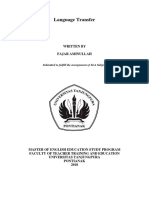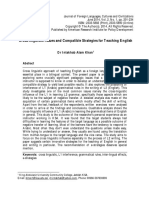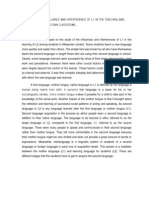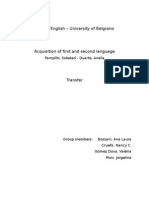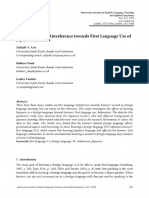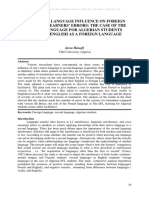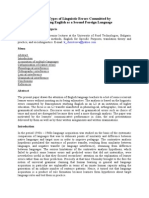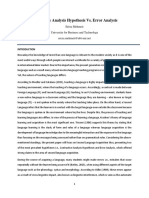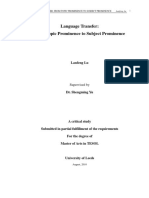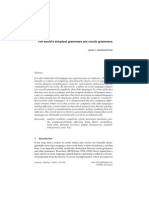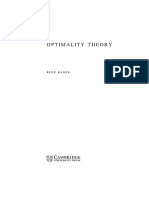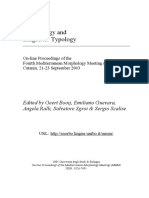0% found this document useful (0 votes)
21 views12 pagesChapter#6
Chapter 6 discusses the complex role of a learner's first language (L1) in acquiring a second language (L2), highlighting the evolution of theories from behaviorist views to current understandings of language transfer. It examines various factors influencing transfer, including linguistic, psycholinguistic, contextual, and developmental aspects, and emphasizes that while L1 can aid or hinder L2 learning, it is one of many factors at play. The chapter concludes that language transfer is multifaceted, involving both explicit and implicit knowledge, and is shaped by the learner's perceptions and the context of language use.
Uploaded by
Breet EyesCopyright
© © All Rights Reserved
We take content rights seriously. If you suspect this is your content, claim it here.
Available Formats
Download as PDF, TXT or read online on Scribd
0% found this document useful (0 votes)
21 views12 pagesChapter#6
Chapter 6 discusses the complex role of a learner's first language (L1) in acquiring a second language (L2), highlighting the evolution of theories from behaviorist views to current understandings of language transfer. It examines various factors influencing transfer, including linguistic, psycholinguistic, contextual, and developmental aspects, and emphasizes that while L1 can aid or hinder L2 learning, it is one of many factors at play. The chapter concludes that language transfer is multifaceted, involving both explicit and implicit knowledge, and is shaped by the learner's perceptions and the context of language use.
Uploaded by
Breet EyesCopyright
© © All Rights Reserved
We take content rights seriously. If you suspect this is your content, claim it here.
Available Formats
Download as PDF, TXT or read online on Scribd
/ 12




